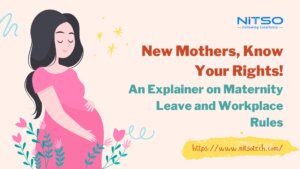Human resources (HR) document management refers to the processes and systems used by HR departments to store, organize, secure, and enable access to employee records and other critical documents. Effective HR document management is crucial for legal compliance, operational efficiency, and providing good employee experiences.
This article provides a comprehensive guide to HR document management. It covers the types of documents, the role and benefits of HR document management, best practices, challenges, digital transformation considerations, how to select a system, emerging trends, case studies, and additional resources.
Table of Contents
Understanding HR Documents: The Paperwork of HR
HR teams handle a vast number of documents related to all aspects of the employee lifecycle. Some common examples include:
- Employee records – Personal information, compensation, performance reviews, disciplinary actions
- Hiring paperwork – Offer letters, non-compete agreements, I-9 forms
- Onboarding documents – Tax forms, handbooks, training confirmations
- Policies – Company policies covering code of conduct, harassment, time-off
- Contracts – Employment contracts, non-disclosure agreements, union contracts
- Compliance paperwork – Consent forms, audit reports, incident reports
Proper management of these documents ensures compliance with regulations like data protection laws, privacy policies, and record retention requirements.
The Role of HR Document Management: Boosting Efficiency, Compliance & Experience
Effective management of HR documents brings numerous important benefits for organizations:
Improving HR Efficiency
- Centralized document repositories make it easy for HR staff to quickly find the files they need.
- Digitized records and automated workflows streamline time-consuming, manual processes.
- Consistent naming conventions and version control reduce time wasted searching.
- Analytics on document usage provide insights to enhance operations.
- Less time spent on administrative tasks allows HR to focus on strategic initiatives.
Strengthening Compliance
- Systematic policies for access controls, encryption, and retention facilitate compliance.
- Automated reminders on document renewal/destruction meet legal obligations.
- Digital audit trails demonstrate adherence and support audits.
- Tools to redact confidential data help manage privacy regulations.
- Templates ensure consistent legally approved language.
Enhancing the Employee Experience
- Self-service access to documents engages and empowers employees.
- Automated onboarding with online forms expedites new hire readiness.
- Interactive handbooks and automated confirmations improve communication.
- Mobile access and e-signatures increase convenience.
- Digital tools facilitate transparency around issues like pay equity.
Supports analytics
Digital documents enable better tracking, reporting and insights.
Best Practices for HR Document Management: The Keys to Success
There are essential best practices to follow for HR document management processes and systems, including standardization, access controls, retention policies, version control, and security. Let’s check them out in more details:
- Standardize document naming and storage – Create consistent conventions and organize logically to enable easy searching and access.
- Establish access controls – Set user permissions aligned with roles and responsibilities. Use multi-factor authentication for sensitive documents.
- Develop retention policies – Define document lifecycles with clear schedules for archiving and destruction to meet legal obligations.
- Enable version control – Save edit histories and prevent changes to approved documents to preserve accuracy and accountability.
- Strengthen security – Protect confidential data through encryption. Control printing and downloads. Conduct audits.
- Create templates – Develop standardized templates for contracts, policies, and forms to enhance consistency.
- Digitize documents – Convert paper records to digital formats through scanning workflows.
- Automate processes – Set up workflows to auto-distribute policies, generate audit reports, etc.
- Centralize storage – Maintain documents in secure, cloud-based systems accessible across the organization.
- Integrate systems – Connect document repositories with core HRIS, payroll, and other systems.
- Train employees – Educate all users on document management protocols through workshops, and help guides.
Common Challenges in HR Document Management: Problems to Overcome
HR document management comes with some common pain points that organizations should be aware of and prepared to address:
Data Fragmentation
Fragmented storage of documents makes finding the right files difficult for HR staff and employees. Some root causes include:
- Lack of naming conventions – No standards for document titles and versions.
- Multiple locations – Documents kept on local drives, file shares, email, etc.
- Manual workflows – Paper documents not digitized, reliance on physical routing for approval.
This leads to slow, frustrating searches, duplications, and gaps in records.
Maintaining Confidentiality
HR handles highly sensitive information, so striking the right balance between security and access is challenging. Issues include:
- Unclear access protocols – Roles and permissions not aligned to need.
- Weak authentication methods – Not requiring strong passwords or multi-factor.
- Print/download visibility – No auditing of physical copies leaving the premises.
- Compliance gaps – Struggling to apply regulations globally like GDPR.
Evolving Compliance Landscape
Keeping up with constantly changing laws and regulations across different jurisdictions is an uphill battle, such as:
- Varying retention periods – Confusion around document lifecycles.
- Unsure of proper disposal methods.
- Audit readiness – Scrambling to prepare for audits.
- Privacy regulations – New data protection laws are being enacted globally.
Legacy Systems Lacking Capabilities
Outdated tools like file shares or manual processes make modern document management impossible. Key limitations include:
- No mobility – Can’t access from mobile devices.
- Poor collaboration – Emailing documents as attachments.
- Minimal security – Unencrypted files and no audit logs.
- No workflows – Very manual, paper-based processes.
- Weak analytics – No insight into document usage.
Digital Transformation of HR Document Management: The Technology Advantage
To optimize HR document management, organizations should focus on digital transformation through modern technologies. Digitizing paper records via scanning streamlines workflows and enables universal access. Transitioning to cloud-based storage removes physical barriers and allows anywhere collaboration with built-in security controls. Automating manual processes through workflows improves efficiency for things like new hire onboarding and policy distribution.
Tight integration between document platforms and core HRMS provides convenient access and eliminates data siloes. Mobile apps give employees self-service access on the go and facilitate approvals. AI capabilities like machine learning can auto-classify documents while natural language processing extracts and indexes data. Advanced analytics provide real-time insights into document patterns to enhance operations. With the right technologies, HR can achieve seamless, user-friendly document experiences.
Choosing the Right HR Document Management System: Key Buying Considerations
Selecting the optimal HR document management system requires evaluating solutions based on key criteria:
User Experience
The system should have modern, intuitive interfaces for both employees and HR teams. It should enable self-service access with role-based permissions. Mobile functionality is essential.
Configurability
The system should allow HR to tailor metadata, workflows, approval routing, and accessibility protocols to meet specific needs.
Collaboration
Tools for assigning, sharing, co-editing, commenting on and signing documents digitally promote productivity.
Integration
Seamless integration with HCM/HRIS, payroll, and talent management systems via APIs avoids siloes.
Security
Robust access controls, encryption, identity management, and audit trails are critical for security and compliance.
Analytics
Reporting and dashboards covering usage patterns, bottlenecks, and other insights are key for optimization.
Scalability
The system should easily scale with business growth and handle increasing document volumes without performance issues.
Total Cost
Consider both implementation and ongoing licensing costs. Factor in change management and training.
Conducting demos, getting customer references, calculating ROI, and piloting software will help make the right choice. Proper change management and training during rollout further ensure success.
Article you might be interested in: Labour Law in India: A Comprehensive Guide to Rights, Compliance, and Practices
The Cutting Edge: Emerging Trends for HR Document Management Systems
HR document management continues to evolve as new technologies emerge. Some key trends to watch:
Artificial Intelligence
AI capabilities like machine learning enable automatic classification and tagging of documents. Natural language processing extracts and indexes critical data from documents. Chatbots field employee questions on documents.
Blockchain
Blockchain provides immutable audit trails and verification for documents. It ensures security, accuracy, and accountability across distributed networks.
Advanced Analytics
Predictive analytics will uncover insights from HR document usage patterns to inform strategic decisions through data like attrition risk indicators.
Distributed Teams
As remote and hybrid work spreads, securing collaboration on confidential documents across decentralized teams is crucial.
Voice Technology
Voice commands and assistants will enable hands-free search and access to HR documents.
Augmented Writing
AI writing aids will help generate compliant HR documents tailored to localized regulations.
Staying on top of these emerging technology trends will allow HR to provide optimized document experiences into the future. Piloting innovative solutions assessively is recommended.
The Final Word: Key Takeaways for HR Document Management
HR document management is vital for productivity, compliance, security, and employee experience. Following best practices around digitization, centralization, and integration paves the way for seamless systems. As workplaces and regulations evolve, the systems must keep pace through automation, collaboration, mobility, and analytics.








0 Comments